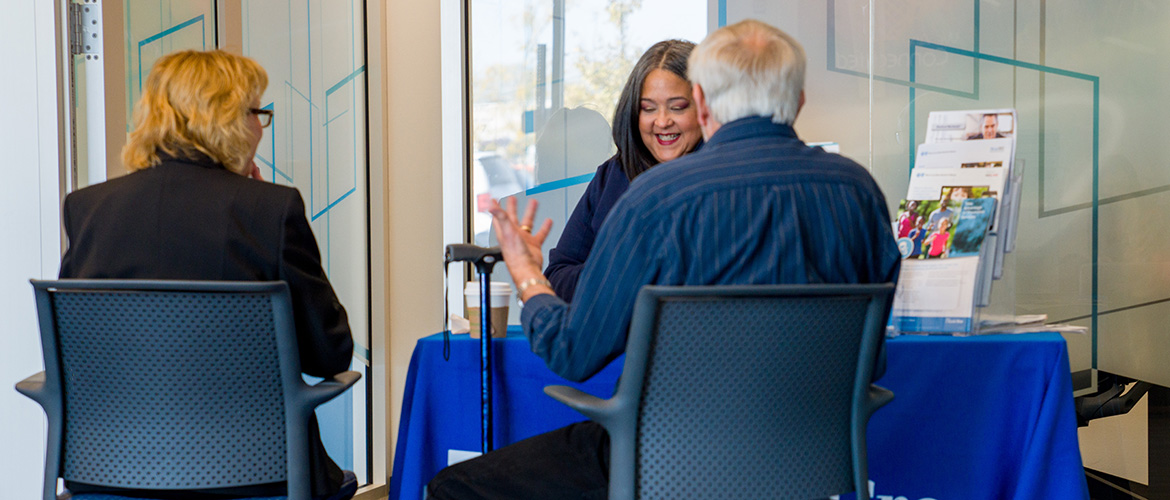Cindy Stacy was in a tough spot. She kept her health coverage through COBRA after losing her job in 2017. But that was about to end, and she wouldn’t be eligible for Medicare until next year.
The Stacys stopped at the Blue Door Neighborhood Center in the Pullman neighborhood of Chicago to talk to Joyce Valdez about their options.
“I’m struggling (to get) insurance coverage,” she said. Her husband Dennis added, “We’re here out of confusion.”
Valdez is a community relations specialist with Blue Cross and Blue Shield of Illinois. Before and during open enrollment, she and her colleagues travel throughout the Chicagoland area to give presentations and hold information help desks in libraries, hospitals and community centers to help people learn about Medicare Advantage, individual health plans and the Affordable Care Act.
The Stacys are far from alone. It’s common for people to retire early and need individual coverage until they turn 65, Valdez said. Others lack health insurance for a variety of circumstances and challenges in their lives.
In total, about 900,000 people in the state were uninsured in 2018, according to the U.S. Census Bureau. Of the adults without insurance in Illinois:
- 41% are Hispanic
- 38% are white
- 15% are black
- 56% are men
- 44% are women
Some are “voluntarily uninsured,” said Thomas O’Rourke, a health policy professor at the University of Illinois. This group tends to be young adults who are healthy and just starting to get financially established. “They think, ‘I’m healthy, why should I pay?’” O’Rourke said.
People of color and people with fewer years of education are also more likely to be uninsured, O’Rourke said. Perceived high cost remains one of the biggest barriers to coverage, experts say.
However, most Illinois residents who don’t have insurance are eligible to enroll in Medicaid (30% of uninsured Illinoisans) or qualify for premium subsidies (52% of uninsured Illinoisans), Census data reports. With financial assistance, many families are able to get affordable health coverage.
The BCBSIL Premium Tax Credit Estimator can show users if a subsidy could help save money on their monthly health plan bill.
In addition, rates for most individual and family plan coverage in Illinois went down slightly for 2020.
Valdez still encourages people to enroll even if they don’t qualify for financial help. “If something should happen, at least you have coverage. You don’t want to be caught having to pay the total billed amount for a sudden injury or accident,” she said.
Knowledge is another barrier to coverage. Getting insurance may be complicated — especially if people try to do it alone. Valdez encounters people like the Stacys every week, walking them through the steps to choose and gain the coverage they want but don’t know how to get.
Cindy Stacy learned she’s eligible to get individual coverage that’s effective before Jan. 1 because her coverage ends before the of this year. She also got information on how to enroll in Medicare once she turns 65.
Not only does BCBSIL provide many opportunities to get free, one-on-one advice on how to enroll in coverage during open enrollment, it’s also adding to its efforts this year with the launch of Be Covered.
Be Covered is a community-based education campaign designed to help uninsured and underinsured people understand the benefits of coverage and identify their subsidy eligibility options.

